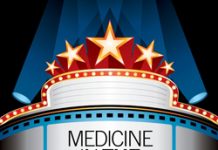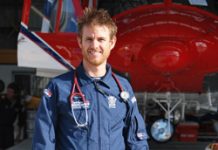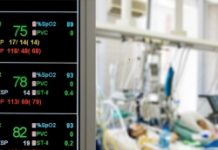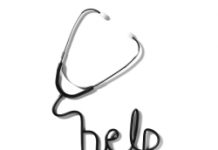 An overseas OOPE in aeromedical retrieval
An overseas OOPE in aeromedical retrieval
When Dr Aarjan Snoek wanted to develop his skills leading a multidisciplinary team in the management of critically ill patients he realised there could be no more fun way than by becoming a flying doctor down under. Now back in the UK he tells us how taking to the air has helped him develop some unique skills.
The land area of Queensland in Australia is vast at over seven times greater than that of the UK and relies heavily on aerial medical transportation to cover distances quickly. The Aerial Medical Service, the precursor to the Royal Flying Doctor Service (RFDS), was established in Queensland in 1928 to do precisely this.
Since then the air transport system has developed significantly and today Careflight Medical Services (CMS) supply Queensland Health with doctors who undertake emergency medical retrievals and interfacility transfers through the RFDS and other organisations.
Despite not performing terribly well on a 6am telephone interview I was fortunate enough to be offered a position as part of the team. Here is my experience.
Clinical experience
Throughout my time primary responses, such as road traffic accidents were most exhilarating, and occasionally required a technical winch job. Primaries were an opportunity to implement ATLS and pre-hospital emergency management first hand, as well as principles unique to retrieval and transfer medicine. These included pre-arrival planning, ensuring scene safety, obtaining 360 degree access, prudent utilisation of bystanders, positioning of team members and equipment, use of checklists1, performing a kit dump2, and minimising the therapeutic vacuum.
The unique working environment allowed for the opportunity to implement cutting-edge techniques and procedures such as finger thoracostomies, hypotensive resuscitation, and coexistent high-flow nasal cannulae preoxygenation3. We had access to modern equipment so that I also gained experience with the use of a McKesson prop4, stretcher bridge, Rapid Infusion Catheter (RIC), trauma tourniquet, and FAST scans.
Interfacility transfers from remote and rural hospitals to tertiary hospitals could also be challenging. The medical work-up on these patients was often minimal, with special investigations like basic X-rays sometimes being unavailable, meaning that clinical skills became all the more crucial. The retrieval flight physician was generally regarded as the ‘expert’ this did sometimes lead to tasks being delayed until my arrival. Interfacility retrievals to tertiary and quaternary centres often involved more complex cases such as a patient on intra-aortic balloon pump support.
The relative predominance of one task type over another depended on the base location, with some bases more commonly tasked for primaries compared to others where interfacility retrievals were more common. Involvement in search and rescue missions, for example to a British holidaymaker bushwalking in the outback5, occasionally became necessary. Scenes with mass casualties fortunately are rare, but when they do occur, can provide valuable leadership experience in a major incident situation.
Non-clinical development
Induction week certainly wasn’t the typical UK fire safety lecture. We were trained in major incident management, basic techniques for vehicle extrication, Helicopter Underwater Escape Training (HUET), and winching.
This training can form part of a Certificate in Aeromedical Retrieval6, although the cost for non-Australian residents might persuade one to consider the Diploma in Retrieval and Transfer Medicine of the Royal College of Surgeons of Edinburgh7 instead.
Working in small teams and hearing about the colourful (often military) career histories of other doctors developed a sense of camaraderie, but the aviation environment also introduced some new ideas such as principles of ‘pilot fatigue’, complexly defined with an algorithm based on the number of hours worked versus rest time.
The fatigue concept also applied to doctors and meant that a scheduled shift might commence later if a previous day’s shift had overrun for example. The Drug and Alcohol Management Plan (DAMP) – usual for aviation crew8 – also applied to doctors, and there was always a potential to be subjected to random testing at work.
Weekly clinical governance meetings allowed for opportunities for in-depth retrospective case analysis with consultants. The formalised professional conversations stimulated reflection, and contributed to the depth of understanding and subsequent improved clinical care.
A weekly statewide teaching programme by teleconference covered topics unique to Queensland such as Irukandji syndrome and snakebite, but also topics pertinent to retrieval medicine such as the use of ketamine for sedation of the psychiatric patient undergoing air transport.
There were also plenty of opportunities to develop non-technical leadership skills and effective communication skills when collaborating towards a common goal, for example in discussions with pilots on the merits of flying at sea level pressures or with helicopter rescue aircrewmen during winching or with firemen (‘firies’) at a car accident scene.
Challenges
Hypobaric hypoxia at altitude causes even one’s own SpO2 to dip as low as 90% but fortunately the panoramic landscape views alone are able to fend off any potential hypoxic fatigue for doctors at least. Helicopters are not as comfortable as they might appear: the limited ‘office space’ can cause aches, and vibration and nocturnal lack of lighting means the need for detective work on note deciphering the following day.
The full body fireproof flight suit in the Queensland summer heat is akin to wearing a swimming costume in Antarctica for its comfort. Vigilance and situational awareness are particularly relevant in an environment that is so noisy that syringe driver and monitor alarms become useless.
Working without direct supervision, with only telephonic backup availability, leads to clinical maturity but does also make a very isolated environment if things start to unravel. The crash team that you might usually fall back on could be hundreds of miles away.
Diseases unfamiliar to us in the UK – such as melioidosis, dengue fever, and chikungunya – are endemic in Queensland. Australia also has some vicious animals including marine stingers, crocodiles, sharks, poisonous snakes (that seem to enjoy sleeping under helicopter skids), giant goannas, mosquitoes and tarantulas.
But other than that, if you think Ashes jibes won’t get to you, I can’t recommend an Australian retrieval medicine OOPE highly enough.
References
1. Mackenzie R, French J, et al. A pre-hospital emergency anaesthesia pre-procedure checklist. Scand J Trauma Resusc Emerg Med 2009; 17(Suppl 3): O26
2. http://www.uk-hems.co.uk/Rapid%20Sequence%20Intubation.pdf
3. Weingart S, Levitan R. Preoxygenation and prevention of desaturation during emergency airway management. Ann Emerg Med 2011; 20(10): 1-11
4. Murphy AP, Doran HJ, et al. The McKesson prop: an essential toolfor the emergency physician? Emerg Med J 2010; 27(2): 156-8
5. http://www.bbc.co.uk/news/uk-england-21490782
6. http://www-public.jcu.edu.au/courses/course_info/index.htm?userText=76511-&mainContent=subjects
9. Le Cong M, Gynther B, et al. Ketamine sedation for patients with acute agitation and psychiatric illness requiring eromedical retrieval. Emerg Med J 2011; doi:10.1136/emj.2010.107946



































